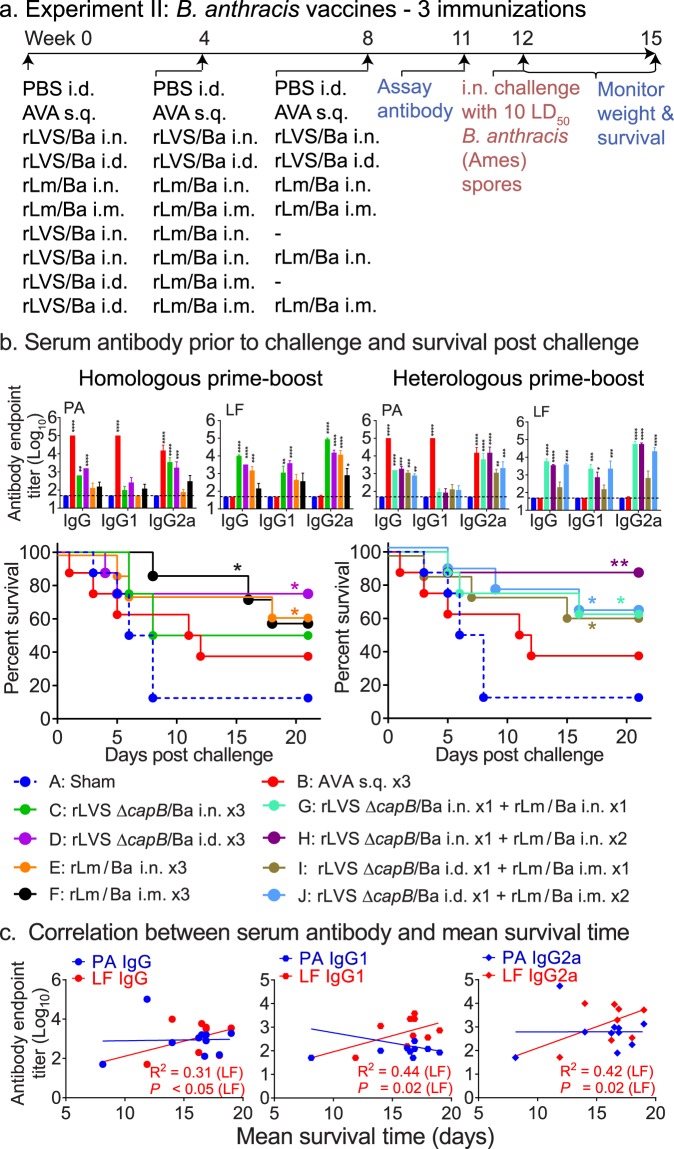Figure 3.
Three immunizations by homologous priming-boosting with rLVS ΔcapB/Ba or by heterologous priming-boosting with rLVS ΔcapB/Ba – rLm ΔactA ΔinlB prfA/Ba induce high-level antibody responses and potent protective immunity against virulent B. anthracis respiratory challenge. (a) Experiment schedule. Mice (n = 8/group) were immunized two or three times homologously with 106 CFU rLVS ΔcapB/Ba (rLVS/Ba) or rLm ΔactA ΔinlB prfA/Ba (rLm/Ba) or heterologously first with rLVS/Ba and subsequently with rLm/Ba, as indicated. Controls were sham-immunized with PBS i.d. or with AVA s.q. three times. All mice were bled at week 11; challenged at week 12 with B. anthracis Ames spores (371,000 CFU, ~10 LD50); and monitored for survival for 3 weeks post-challenge. (b) Serum antibody prior to challenge and survival post challenge. Top panels. Sera were assayed for IgG or IgG subtypes IgG1 and IgG2a to B. anthracis PA and LF proteins, as indicated, after homologous (left two panels) and heterologous (right two panels) prime-boost vaccination. Values are mean + SEM of serum antibody endpoint titer for n = 8 per group. Differences in serum endpoint titer among individual groups were analyzed by two-way ANOVA with Tukey’s corrections. *P < 0.05; **P < 0.01; ****P < 0.0001 vs. Sham group. Bottom panels. The survival curve of each vaccinated group, color-coded as indicated in panel b, after homologous (left) and heterologous (right) prime-boost vaccination and challenge is compared with that of the Sham group by the log-rank test (Mantel-cox); P values for vaccine groups that are significantly different from the Sham group are marked with one or more asterisks color-coded to the color of the vaccine symbol. *P < 0.05 and **P < 0.01. (c) Correlation between serum antibody and mean survival time. The correlation coefficient (R2) and one-tailed P values were obtained as described in legend to Fig. 2d.

